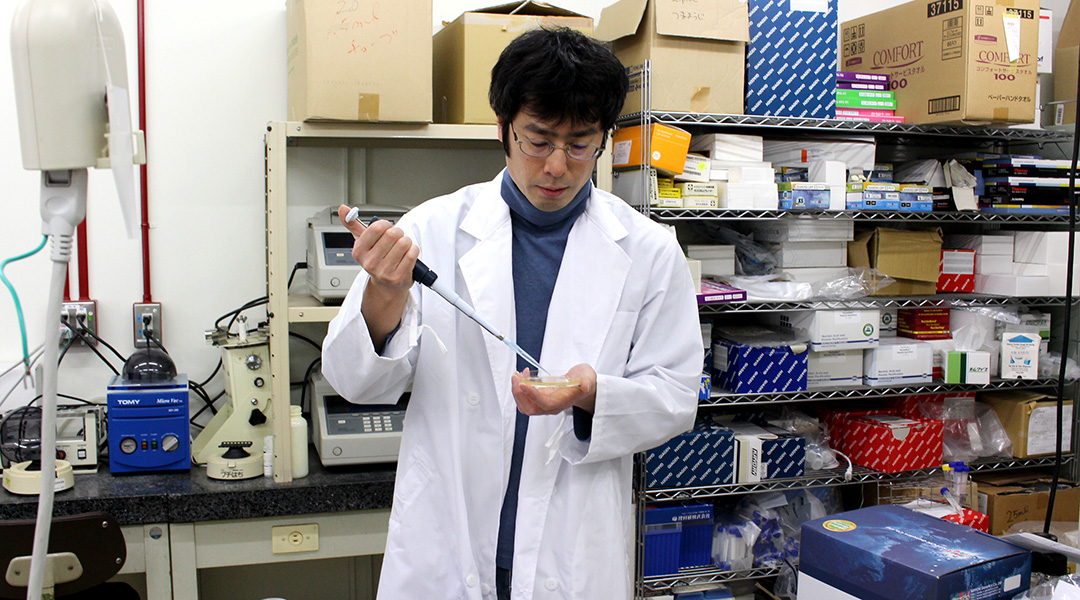NEWS
Article by the university's Assistant Professor by Special Appointment Ryosuke Hayama published in EMBO Journal
Update: March 22, 2017

An article by Assistant Professor by Special Appointment Ryosuke Hayama, "PSEUDO RESPONSE REGULATORs stabilize CONSTANS protein to promote flowering in response to day length" was published in the official journal of the European Molecular Biology Organization (EMBO), the EMBO Journal.
Research contents
Many organisms live while recognizing the length of day, which fluctuates every day, in order to adapt to high latitude where seasonal climatic fluctuations involving significant temperature changes occur. It is generally known that the flowering of plants occur in mild seasons, but this process reflects the unique ability of plants to detect day length. Organisms measure the length of day or night by transferring information on the light environment to the internal photoperiodic time-keeping mechanism. It has not been clear, however, what mechanistic framework was involved in transmitting light information to the circadian clock.
In our research using in Arabidopsis thaliana, we discovered the specific proteins that convey information on light exposure to the internal time-keeping mechanism. They are called PSEUDO RESPONSE REGULATORs (PRR) and couple with the protein called CONSTANS (CO) within the clock mechanism. Further, we found that PRR proteins co-operate with CO to also regulate the florigen gene, known for controlling or triggering flowering in plants, plays an indirect role of adjustment in conjunction with CO. PRR proteins have been discovered to date in barley, rice and many other plants, but their specific roles remained long unclear.
Because of the results of this research showing that the PRR proteins are involved in the recognition of photoperiodic and seasonal changes and adjustment of flowering periods, the quality of a wide variety of agricultural products is expected to improve in the future.
Comments
We conducted this research for basic scientific purposes to clarify the molecular mechanism that transmits information on light exposure to the circadian clock in plants. We considered a variety of proteins as candidates potentially involved in this mechanism, selected "promising candidates" and illustrated their involvement.
Individual organisms are composed of great many numbers of genes. 15 or 20 years ago, when identification of genes was not so common, the method to choose from among known genes and demonstrate their functions carried high risks, and there were very few researchers to perform such research. Today, however, when gene isolation and functional analysis have made great progress, an increasing number of researchers are adopting such a method.
It still remains unchanged today, nevertheless, that an analysis of the function of even a single gene requires a great amount of time and labor (and money). Researchers often avoid this method believing that it is still risky even today and it is not a pure science. I am also one of these researchers. In this research, however, I chose the risky method out of curiosity against the PRR genes and spent seven years trying to show the involvement of the proteins. Oftentimes, I thought, "Perhaps, I shouldn't have started this." But in the end, I obtained the results I had anticipated and I am now feeling relieved.
This research was made while I was working at the Max Planck Institute for Plant Breeding Research in Germany, and I am indebted to many people. I would like to take this opportunity to express my gratitude to my co-researchers -- Liron Sarid-Krebs, Virginia Fernandez and Rene Richter - at the institute and my boss, George Coupland.
